PBI Old Testament Studies Collection (6 vols.)
Digital Logos Edition
Overview
The PBI Old Testament Studies Collection features studies in the Old Testament from the Pontifical Biblical Institute. The six engaging volumes present erudite perspectives on a number of important issues in the Old Testament. These include the OT application of the narratology method of literary criticism, the OT conception of death, Ezekiel’s prophecy on Tyre, the literary elements and genres that constitute the eighth chapter of Daniel, and more.
As an institution of the Holy See, the Pontifical Biblical Institute has been producing some of the most penetrating analyses on the Bible and its peripheral disciplines since 1927. Renowned scholars from around the globe have contributed to their considerable roster of authors. Each book is marked by insight and astute scholarship, always with an eye to serving the church. The Old Testament Studies Collection is no exception to this legacy of quality.
This title is included in the following collections
You can save when you purchase this product as part of a collection.
Pontifical Biblical Institute ...
$1,153.46$864.99Verbum 5 Platinum Legacy Libra...
$1,499.99$1,499.99Logos 9 Messianic Jewish Plati...
$1,499.99$1,499.992025 Verbum Researcher Diamond
$2,999.99$2,249.99
- $2,999.99
- $2,999.99
- $2,999.99
- $4,749.99$3,324.99
- $4,749.99
- $4,749.99
- $23,999.99$17,999.99
- $24,999.99

Individual Titles
- “Our Fathers Have Told Us”: Introduction to the Analysis of Hebrew Narratives
- Cosmic Battle and Political Conflict: Studies in Verbal Syntax and Contextual Interpretation of Daniel 8
- Primitive Conceptions of Death and the Nether World in the Old Testament
- Genesis and the “Jewish Antiquities” of Flavius Josephus
- Jewish Ossuaries: Reburial and Rebirth
- Ezekiel’s Prophecy on Tyre: A New Approach
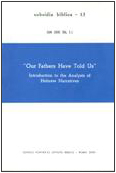
“Narratology” is a recent method of literary criticism adopted by exegetes for the analysis of Old Testament narratives. The aim of this introduction is to help the student find a way through the forest of new terms used by specialists and to give numerous examples of texts analyzed according to this new methodology.
The work also contains, as far as possible, references to the origin of the terminology, to basic works in the field, to interesting discussions, and to different schools in literary criticism. Moreover, this manual tries to open a forum for a constructive dialogue between exegetes using more classical methods and those who favor this new way of exploring the well-known landscape of Scripture. The principal notions explained and illustrated are story, time, plot, narrator and reader; character, and point of view.
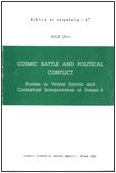
This study offers a fresh appreciation of the various literary elements and genres that constitute Daniel 8 as a whole. Namely, these are the narrative frame, the vision report itself as well as its application to Jewish history under Antiochus IV. While situating the message of this chapter within the Book of Daniel, it also shows the importance of the Ancient Neat Eastern context for the understanding of biblical imagery. In that perspective the work gives a thorough treatment of the syntax of Hebrew verbs and other philological matters that have a special bearing on biblical interpretation.
This Monograph makes one of the most challenging biblical texts more accessible to serious students of the Hebrew Bible and the Ancient Near Eastern languages in general.
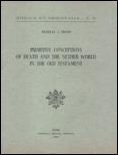
Death is a vital issue in the Old Testament. This appears both from the innumerable allusions to the reality of death and its consequences, and from the numerous studies devoted to the subject since the rise of modern critical exegesis. As the results of this research are sufficiently well known, a summary of them is not called for; and a fresh analysis of established positions would amount to a series of repetitions. A new approach is imperative to justify another study of our theme. This fresh starting-point was found in Ugaritic literature.
The special value of Ugaritic texts consists in their language, which shows a remarkable similarity with biblical Hebrew, both in vocabulary and style. This dissertation intends to show how the application of the fruits of Ugaritic scholarship can make a valuable contribution to the study of Israelite conceptions about Death and the Hereafter.
In the first place this contribution is of a linguistic nature: it attempts to use the results of philological research on the Ugaritic texts and its application to biblical literature. Secondly, it tries to obtain a better perspective of Israelite views on Death and the beyond with the help of conceptions found in these texts. Above all things, this study attempts to take advantage of the results obtained by the philological research of the Ugaritic texts and its application to biblical literature.
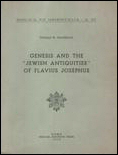
The first and more fundamental purpose of this investigation is to determine both what Josephus has retold of the Genesis narrative in his Antiquities of the Jews, and how he has reshaped what he has retold. The “definition” of the work of a particular author is, however, not quite enough to make such definition sufficiently concrete and graspable. Literary milieu is, therefore, an important and even necessary factor in any attempt to clarify what an author has done. For this reason, both what Josephus has retold and how he has reshaped what he has retold must be to a certain extent measured against a given set of literary parameters. Such “measurement” of both these aspects constitutes the second purpose of this investigation.
References which give a measure to the discoveries respecting what Josephus has retold are drawn from numerous types of sources. Among these may be mentioned at once is the whole body of Alexandrian Jewish literature (including Philo), the Apocrypha (in the narrower sense attributable to the body of literature usually denominated thus), the Qumran literature, the Talmud (in both its forms), Targumim, Pseudepigrapha and Midrashim. Needless to say, some sensible limitation to these references have been decided upon and applied. The problem of limitation of references is resolved in this investigation by the choice of three parameters which will function as the principal sets of references in dealing with what Josephus has retold and as the only sets when there is question of how our author achieved what he did.
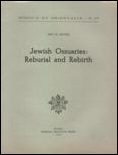
The question of the meaning and origin of Jewish ossuaries has long held the attention of the scholarly world. Since the vast majority of Jewish ossuaries come from the latter part of the Second Temple period they constitute one of the most important bodies of evidence for the recovery of the Judaism of that period. Their style, their inscriptions, the burial procedures they require, all are matters that now must be taken into account.
This study takes a relatively new approach to the problem of ossuaries labored under the false hope that all questions regarding Jewish ossuaries could be answered within the context of Hellenistic-Roman society in Palestine and abroad. However, noted Israeli scholar L. Y. Rahmani broadens the scope of the study of Jewish ossuaries to include the bone-collecting practices of the First Temple period (Iron II). The present work follows his lead in this respect.
Because Jewish ossuaries for long were not studied in a broader context, the practice of secondary burial which underlies the phenomenon of Jewish ossuaries was thought to be unrelated. So little noticed was the long-standing custom of gathering bones after decomposition that the most expert commentators have remarked: “It is not clear from whom the Jews took this strange custom, which is indeed alien to the spirit of the Semitic peoples to whom disturbing the deceased was prohibited”; or “no proper indication has been given on the religious-historical plan of this burial-custom which is alien to the Jewish tradition.” It would be strange indeed for Jews to adopt a mode of burial which had no prehistory in Palestine, especially in light of halachic prohibitions against contact with the dead or remains of the dead. To find secondary burials in wide usage before Hellenistic-Roman times, therefore, is an important clue to unraveling the history of Jewish ossuaries, which do not emerge in a vacuum or begin as a result of outside borrowing.

In an attempt to clear up the manifold obscurities and problems with the text of Ezekiel’s Prophecy on Tyre, commentators have mainly resorted to two devices. The first is excessive emendation or interpretation of the Hebrew text on the basis of the ancient versions and especially of the LXX. The second is a literary approach, consisting in cutting out bigger or smaller portions from the text to meet the poetical and metrical requirements favored by the commentators themselves.
Fortunately, of late there have been some signs of a new, third method, based on a firm belief in the substantial reliability of the consonantal Hebrew text, and availing itself of the new material of both lexical and syntactical nature uncovered by comparative Canaanite and Semitic studies. Commentators are becoming increasingly convinced that in most cases this is the only method to obtain permanent satisfactory results.
The present writer hopes to make a contribution to the study of Ezekiel’s prophecy on Tyre with the help of the above-mentioned basic methodical principles. He prefers not to take a stand on questions that go beyond the philological and syntactical problems in these chapters. He will center his attention upon controversial points, describing their particular difficulties, referring to the different ways scholars have sought to master the questions, and proposing his own suggestions. In as far as seems desirable, the author will take the liberty of applying these solutions to other biblical texts as well. Moreover, linguistic parallels in Ugaritic and other Northwest Semitic dialects will be discussed at some length.
If this study achieves anything, it will prove the soundness of the standard Hebrew text and will illustrate the necessity of having recourse to the other dialects of Northwest Semitic.
Product Details
- Title: PBI Old Testament Studies Collection
- Publisher: Pontifical Biblical Institute
- Volumes: 6
- Pages: 1,129